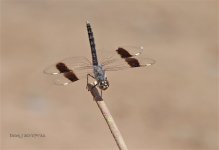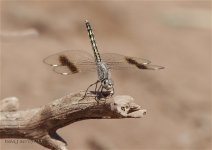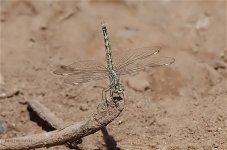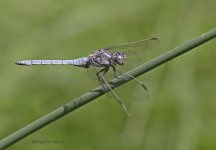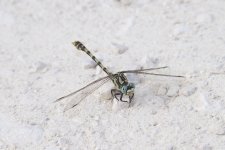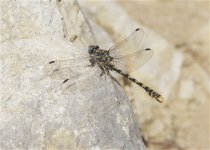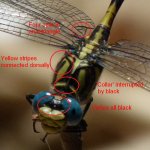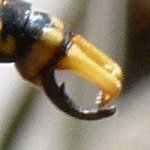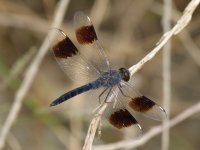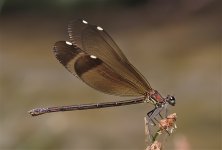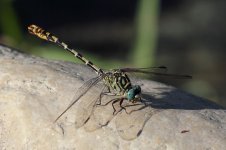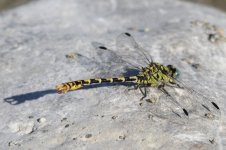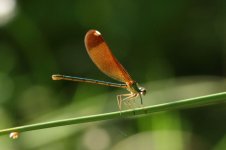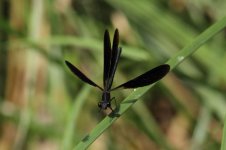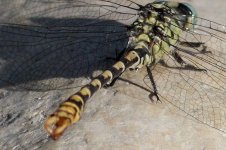-
Welcome to BirdForum, the internet's largest birding community with thousands of members from all over the world. The forums are dedicated to wild birds, birding, binoculars and equipment and all that goes with it.
Please register for an account to take part in the discussions in the forum, post your pictures in the gallery and more.
You are using an out of date browser. It may not display this or other websites correctly.
You should upgrade or use an alternative browser.
You should upgrade or use an alternative browser.
Spanish Dragonflies for I.D. Please (1 Viewer)
- Thread starter redeyedvideo
- Start date
More options
Who Replied?These were all taken in Andalucia recently, are the first 3 the same species? I'm guessing Keeled Skimmer for no.4? Any help gratefully received, thanks.
First three are adult male, imm. male + female Northern Banded Groundling, Brachythemis impartita which has recently been split from B. leucosticta agg. Apparently the former is the only one north of the Sahara. These are basically common African species. There's an interesting article about the expansion of African dragonflies into Iberia in the latest Atropos magazine.
Think you're right with southern form of Keeled Skimmer
redeyedvideo
It's like water off a duck's back!
pdwinter
Paul Winter
One more I nearly forgot about, a clubtail? This was taken in the Sierra de Cazorla mountain range.
I think it's a male Large Pincertail (Onychogomphus uncatus) - a pic of the wings from above or the appendages from the side would confirm it wasn't Onychogomphus forcipatus.
redeyedvideo
It's like water off a duck's back!
pdwinter
Paul Winter
Hi Dave
Your 2nd pic of the pincertail shows the four-celled anal triangle which together with the all black vertex and the patterning on the thorax in pic 1 are enough features to confirm Large rather than Small Pincertail.
I've attached a pic highlighting the features and a a small one of the appendages of a Large Pincertail which are diagnostic but a lot more difficult to see and/or photograph than the other features.
Steve Jones has a page showing the appendages of Small Pincertail
http://www.cornishnature.co.uk/drag...mall-pincertail-onychogomphus-forcipatus.html
Pages 198-200 of Dijkstra are very useful (that's where I got the info from!)
Cheers, Paul
PS I've also put up a pic of a really mature male Brachythemis impartita where all the pale markings have gone.
Your 2nd pic of the pincertail shows the four-celled anal triangle which together with the all black vertex and the patterning on the thorax in pic 1 are enough features to confirm Large rather than Small Pincertail.
I've attached a pic highlighting the features and a a small one of the appendages of a Large Pincertail which are diagnostic but a lot more difficult to see and/or photograph than the other features.
Steve Jones has a page showing the appendages of Small Pincertail
http://www.cornishnature.co.uk/drag...mall-pincertail-onychogomphus-forcipatus.html
Pages 198-200 of Dijkstra are very useful (that's where I got the info from!)
Cheers, Paul
PS I've also put up a pic of a really mature male Brachythemis impartita where all the pale markings have gone.
Attachments
Last edited:
redeyedvideo
It's like water off a duck's back!
Many thanks for your replies once again Paul & aeshna5, this is a new interest for me as you can probably tell, brought about by the wonders of digital photography.
Barred Wobbler
Well-known member
A most timely post.
I've just arrived in Spain this afternoon and after checking into the digs I went to look at Sierra Crestellina and the nearby Rio Genal. Last year at the same time I had orange-winged dropwing and violet dropwing.
No sign of either today, but I came across a few dragons that to my eye look the same on my camera screen as this pincertail. I've not got any facility here to download and edit, but I might be posting some pics of them here when I get home later in the month.
I've just arrived in Spain this afternoon and after checking into the digs I went to look at Sierra Crestellina and the nearby Rio Genal. Last year at the same time I had orange-winged dropwing and violet dropwing.
No sign of either today, but I came across a few dragons that to my eye look the same on my camera screen as this pincertail. I've not got any facility here to download and edit, but I might be posting some pics of them here when I get home later in the month.
redeyedvideo
It's like water off a duck's back!
Barred Wobbler
Well-known member
Well I'm back home and shaking off the effects of the trip.
This is the pincertail I saw on the Rio Genal near Gaucin, Andalucia.
Specific ID would be most appreciated (I caught up with both violet and orange-winged dropwings at the same site on another visit).
There are a couple of demoiselles from the Rio Guadalmina also.I recall seeing the black one a good number of years ago on Menorca.
This is the pincertail I saw on the Rio Genal near Gaucin, Andalucia.
Specific ID would be most appreciated (I caught up with both violet and orange-winged dropwings at the same site on another visit).
There are a couple of demoiselles from the Rio Guadalmina also.I recall seeing the black one a good number of years ago on Menorca.
Attachments
Last edited:
pdwinter
Paul Winter
Well I'm back home and shaking off the effects of the trip.
This is the pincertail I saw on the Rio Genal near Gaucin, Andalucia.
Specific ID would be most appreciated (I caught up with both violet and orange-winged dropwings at the same site on another visit).
There are a couple of demoiselles from the Rio Guadalmina also.I recall seeing the black one a good number of years ago on Menorca.
The demoiselles are female and male Copper (Calopteryx haemorrhoidalis) and I think the pincertail is Small (Onychogomphus forcipatus) based on markings but I'm struggling to count the cells in the hindwing anal triangle (either my monitor or my eyesight!)
Barred Wobbler
Well-known member
pdwinter
Paul Winter
yes - from what I can see there are 3 cells in the triangle. The Small Pincertail usually has three and the Large Pincertail usually has four. There is some yellow on the vertex and the black lines on the side of the thorax connect to the black line down the top of the thorax which are both pro Small Pincertail features.Does this view help?
There is an article http://www.cornishnature.co.uk/drag...mall-pincertail-onychogomphus-forcipatus.html with some good illustrations.
Dijkstra has all the illustrations of the differences.
Paul
Barred Wobbler
Well-known member
Thanks Paul.
Users who are viewing this thread
Total: 2 (members: 0, guests: 2)




